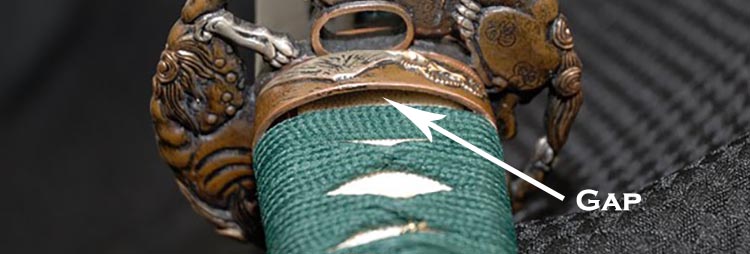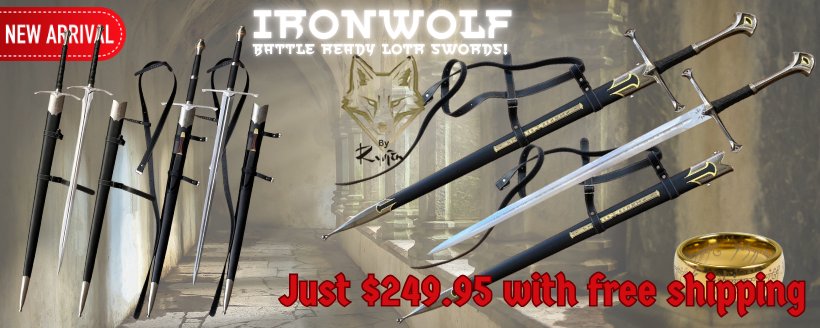Fuchi

The Fuchi, counterpart to the Kashira (they are often lumped together as Fuchigashira) is a band of metal that caps the top of the handle of a Japanese sword.
They are used to both reinforce the structural integrity of the handle itself, and to covers the end of the ito wrap and come in a variety of styles, usually matched to the tsuba and the Kashira.
What Fuchi are Made from, How Much they Cost and Common Problems
WHAT THEY ARE MADE FROM: Like the Kashira, Fuchi can be made from a variety of metals. The cheapest ones are cast from zinc alloy, but are quite brittle and not suitable for a functional, cutting sword. Functional swords should have one made from either stainless steel, iron, work hardened copper or brass and can be decorated with gold or silver inlay.
HOW MUCH THEY COST: They are rarely sold on their own, but usually sold as a set with the Kashira (and sometimes also the tsuba) - prices vary depending on the material used and where they are made, with the average price for a functional one approx $20-50, while Japanese made Fuchi are typically priced between $150 to $250.
COMMON PROBLEMS: Apart from cheap, fall apart zinc alloy versions - which should never have been mounted on a functional sword in the first place, the most common issue encountered with these components is a poor fit done at the forge allowing a gap between where it meets the wood.

A gap any more pronounced than in the picture above suggests that the forge simply took the nearest available wooden handle and quickly fitted it to the components rather than using a more suitable tsuka core.
As adjusting such a gap is pretty much impossible (the only way to do so would be to construct a brand new tsuka core from scratch) there is very little than can be done if a sword arrives with this issue (other than to contact the vendor where you purchased it from).
While unsightly, a large gap weakens the overall structural integrity of the hilt - not to the point to where it is dangerous and is more of a cosmetic issue than anything else - but when it comes to swords, you want all the fittings as tight as possible just to be on the safe side.
I hope this information on Fuchi has been helpful. To return to Samurai Sword Terminology from Fuchi, click here

Buying Swords Online Can Be DANGEROUS!
Find the Best Swords in the:
Popular & Recommended ARTICLES

The ONLY true free online magazine for sword enthusiasts. Delivered once a month on the 1st day of the month, no filler and no BS, just the latest sword news & info delivered straight to your inbox.













